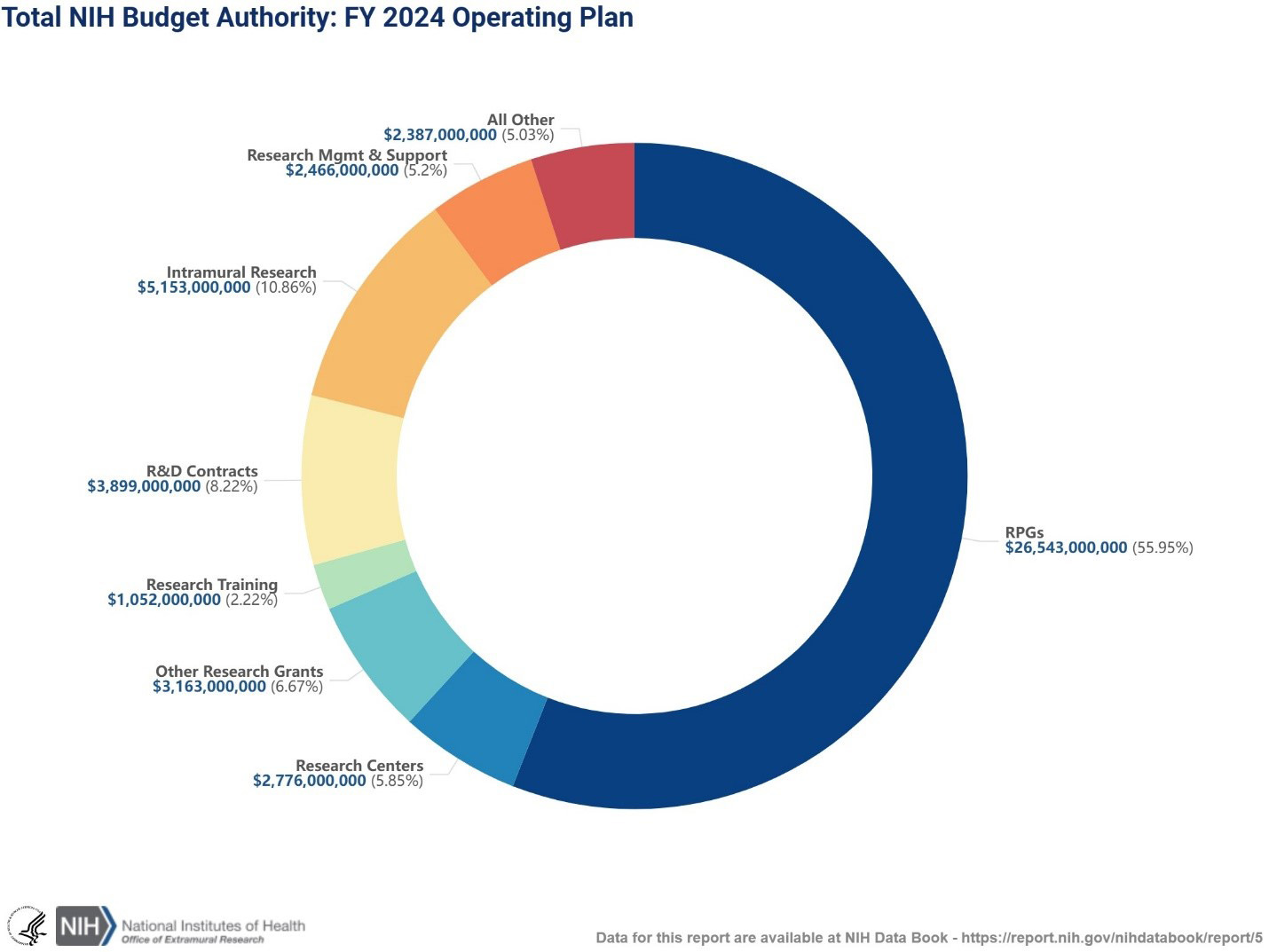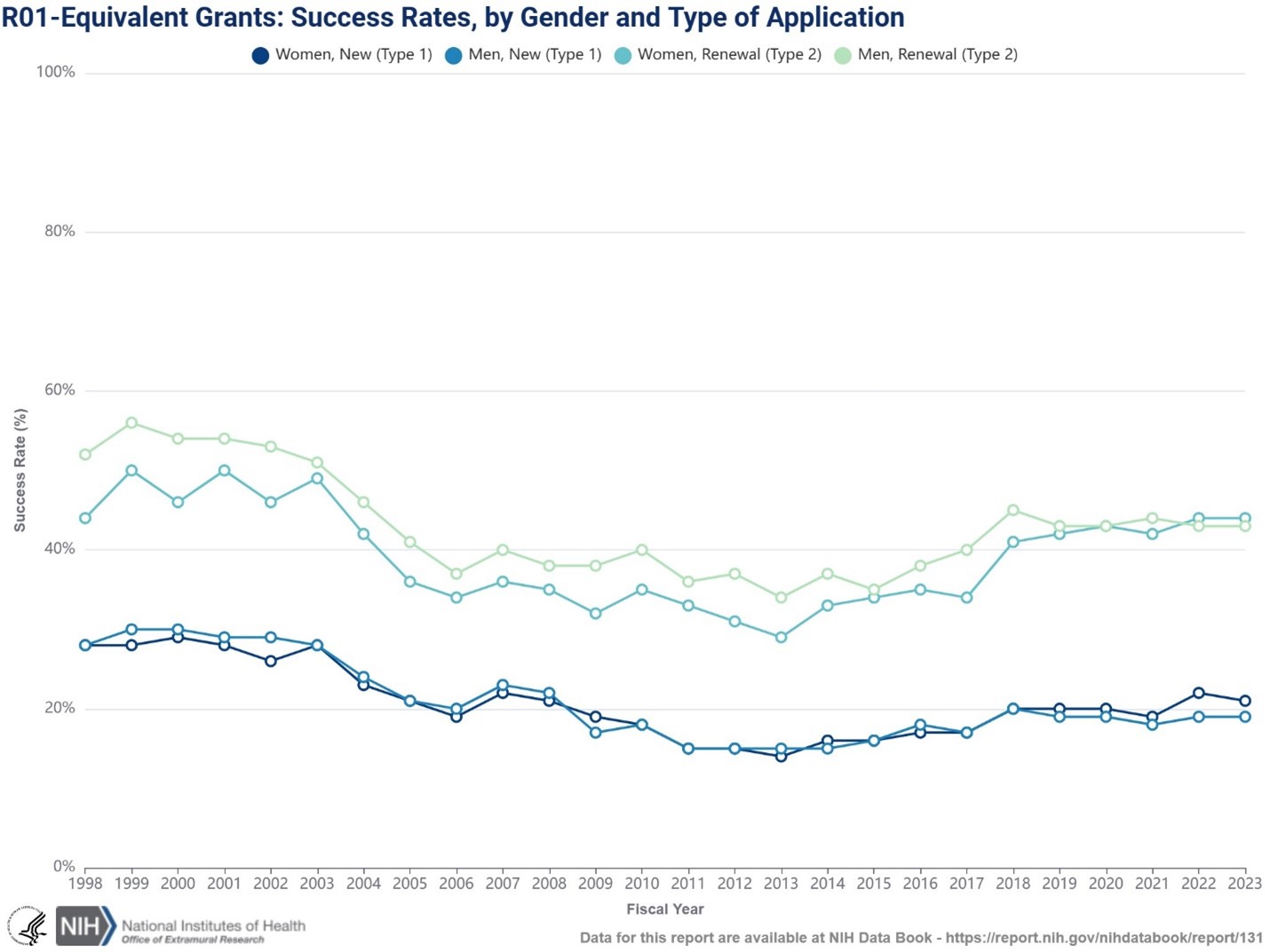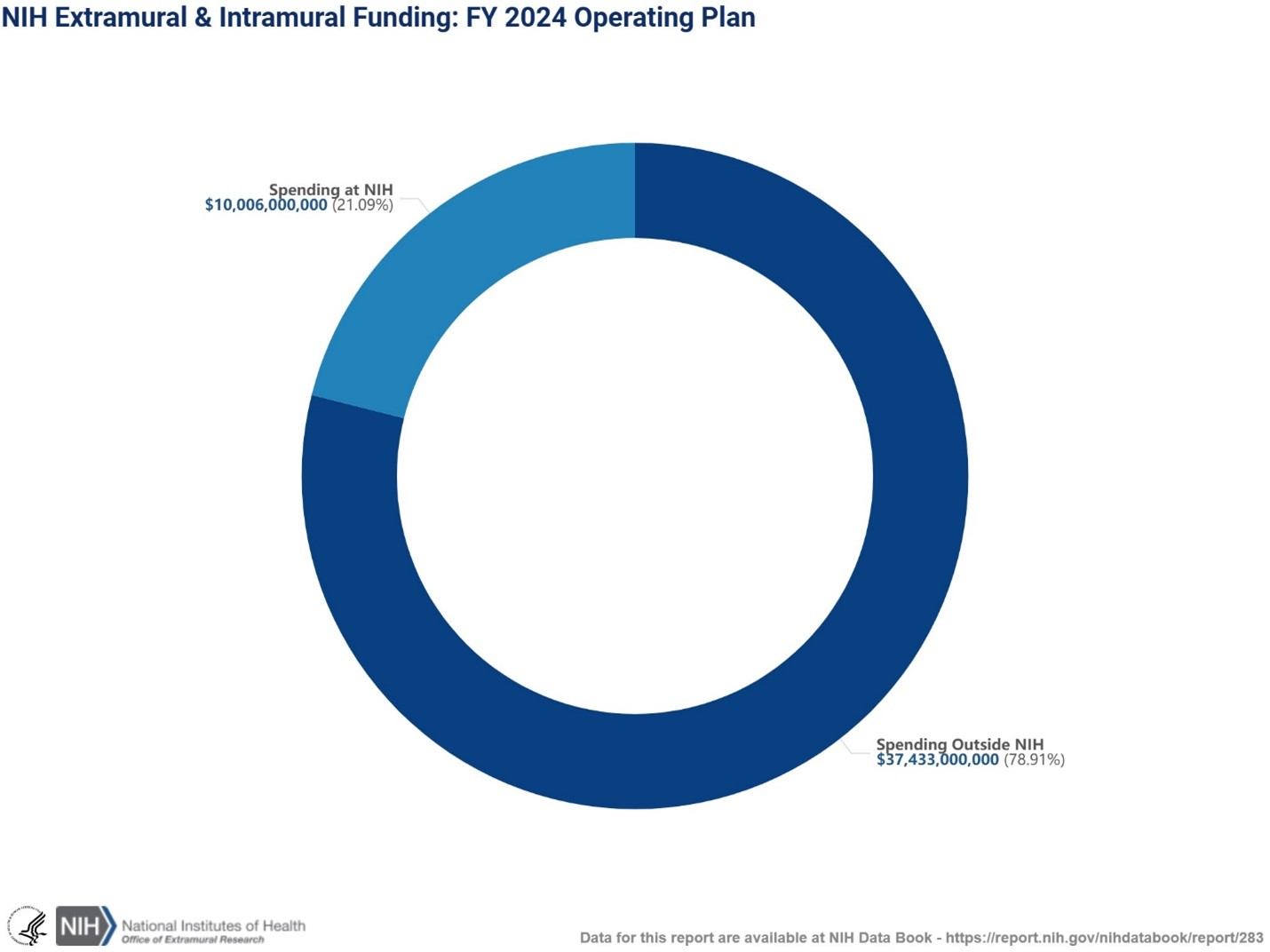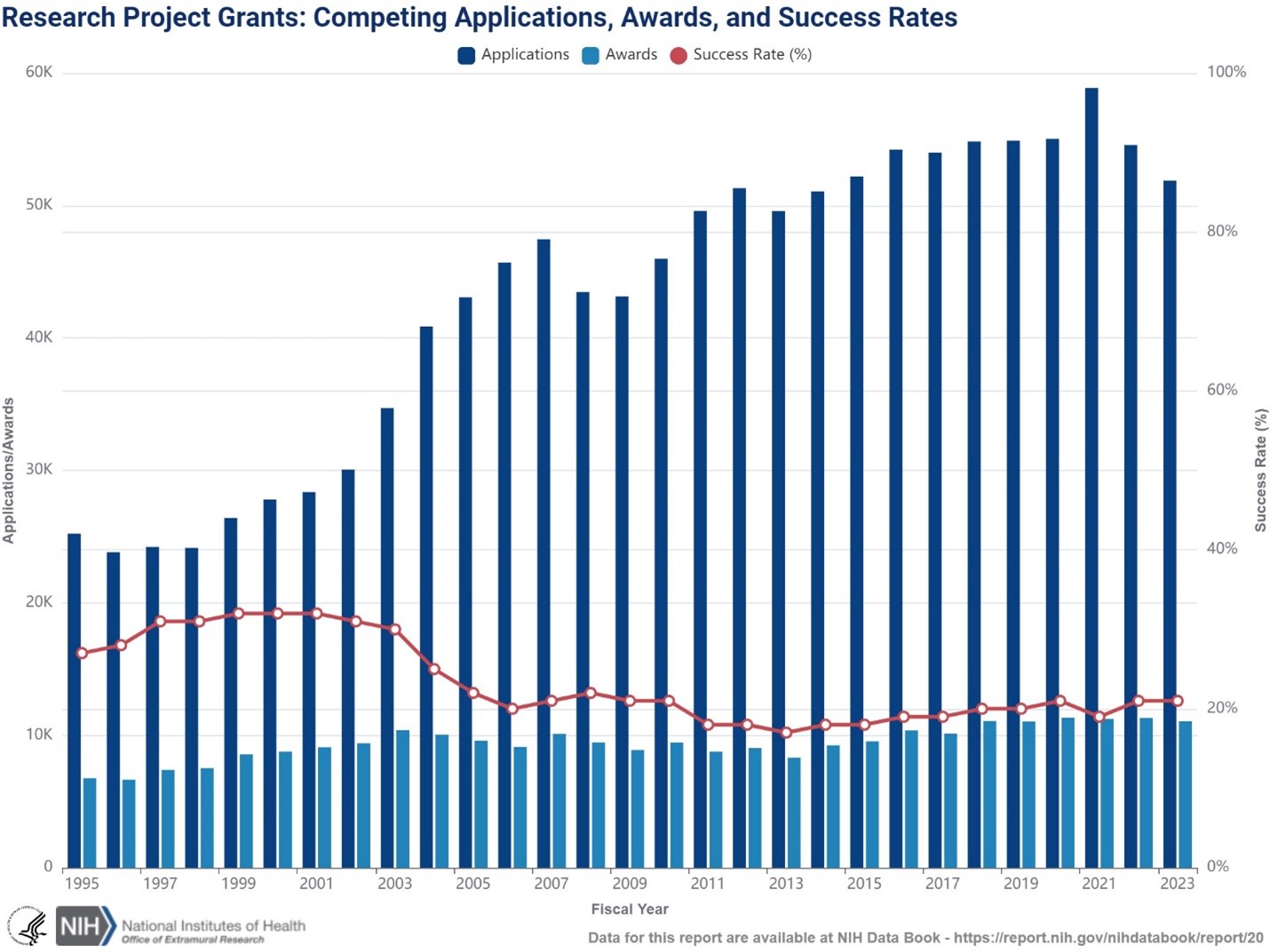You are here
NIH Research Grants – Digital Media Kit
In this kit:
NIH Grants to Research Institutions NIH Funding Process Grants Data Grants Success Rates Images
NIH Grants to Research Institutions
The National Institutes of Health is the largest public funder of biomedical research in the world. NIH-funded research has led to breakthroughs and new treatments helping people live longer, healthier lives, and building the research foundation that drives discovery.
In fiscal year 2023, the NIH awarded $34.9 of its $47.7 billion appropriation (see Appropriations history) to nearly 59,000 new and renewed meritorious research grants through its extramural research program. These awards supported research personnel1at more than 2,700 academic universities, hospitals, small businesses, and other organizations throughout the U.S. and internationally.
Pie chart of NIH extramural and intramural funding.
NIH Funding Process
Organizations all over the world submit applications for research projects to the NIH. Applications undergo a first- and second-level peer review process to assess scientific merit of the proposed research. Scientific Review Groups (SRGs) composed primarily of non-federal scientists who have expertise in relevant scientific disciplines and current research areas carry out the first level of review. NIH institute and center (IC) National Advisory Councils or Boards perform the second level of review. Both scientific and public representatives chosen for their expertise, interest, or activity in matters related to health and disease comprise these advisory councils. Only applications that are favorably reviewed by both the SRG and advisory council may be recommended for funding. Each IC director, using feedback from the peer review process and their own programmatic staff, decides which research applications to support weighing review scores, research priorities, public health need, scientific opportunity, occasionally training and infrastructure needs, and availability of funds.
NIH grants support a wide array of biomedical and behavioral research projects, from fundamental science through clinical research and product commercialization. Grants also support research training and career development, ensuring the future of U.S. competitiveness and innovation through strengthening the biomedical research workforce.
More on the grants process.
Grants Data
NIH RePORTER is a web-based tool that allows users to search a database of NIH-funded research projects and award data. Users can search project titles and descriptions (abstracts), view award amounts, and search by many other criteria, including research organization, principal investigator (PI), city, state, and congressional district. Information on outcomes from grant awards (e.g., research publications and patents) is also available. Other tools include maps and other data visualizations. NIH provides a number of tools to help the public find information about grant funding through our RePORT website. In addition to providing access to a variety of Institute and topic-specific strategic plans, as well as detailed data and reports on NIH grant funding, RePORT includes the following tools and information:
NIH Data Book provides at-a-glance graphics and tables of NIH funding trends on grant awards, including basic summary statistics on success rates, small business programs, peer review, and the trainees and fellows supported through extramural research programs.
RCDC (Research, Condition, and Disease Categorization) displays total NIH funding for a particular research, condition or disease category by fiscal year. The categorical spending table provides the actual spending data and future estimates for 324 research, condition, and disease categories (see here for the newest categories added). NIH implemented the RCDC process in 2008 to provide better consistency and transparency in reporting funded research areas. Importantly, NIH does not expressly budget by category and the research categories are not mutually exclusive (i.e., individual research projects can be included in multiple categories).
NIH Awards by Location & Organization provides information on funding amounts for organizations, funding mechanisms, locations, and more by fiscal year.
Application Success Rates
NIH reports on the percentage of reviewed grant applications that receive funding on an annual (fiscal year) basis, also referred to as the “success rate.” These success rates are calculated and published after the close of the fiscal year.
Graphs of success rates are available in the NIH Data Book. More detailed data, such as success rates by award type, specific program, and NIH Institute and Center are available on the Success Rates page. Please note that NIH does not report the number of applications received in specific research areas, and thus does not report success rates for those areas.
Images
This page last reviewed on December 19, 2024




